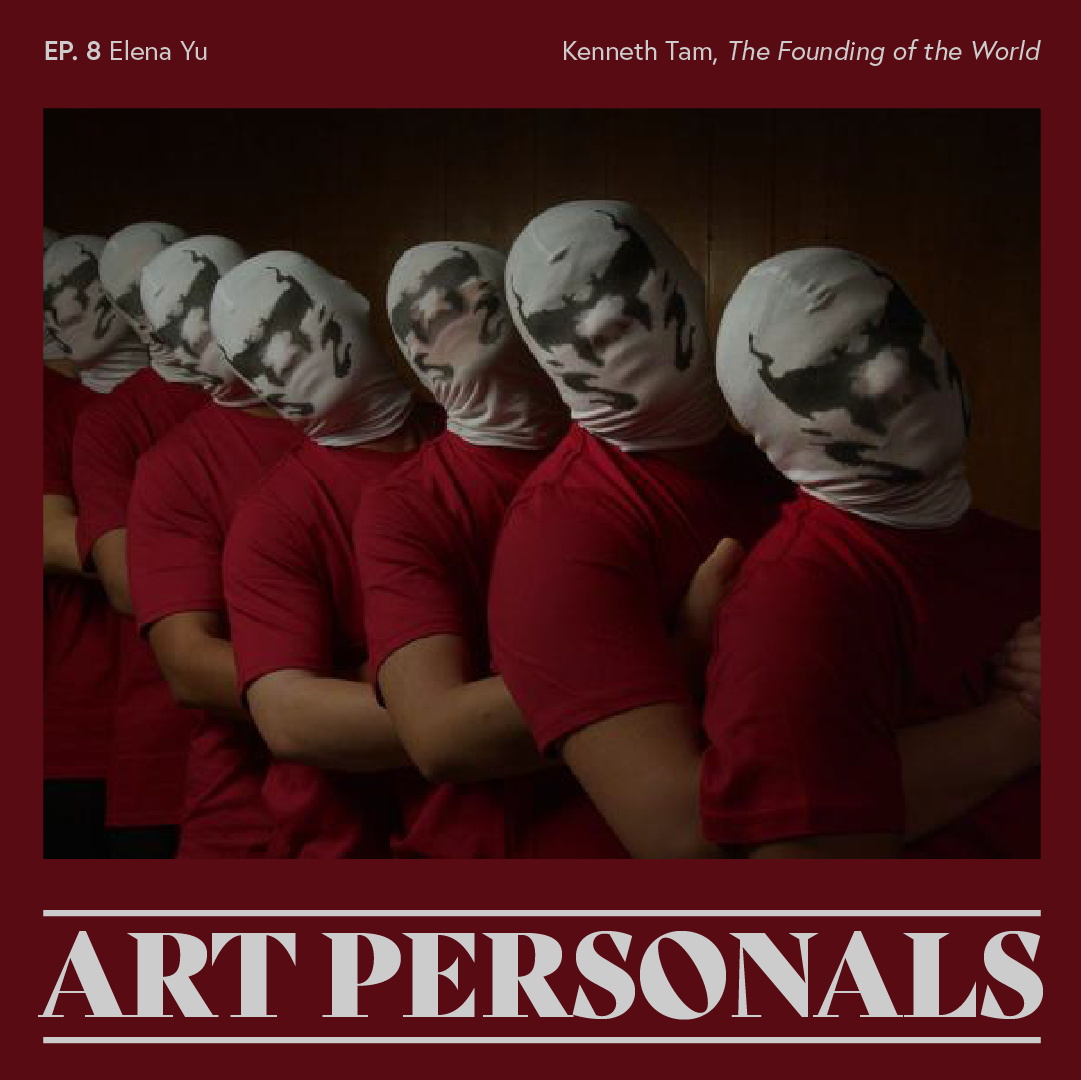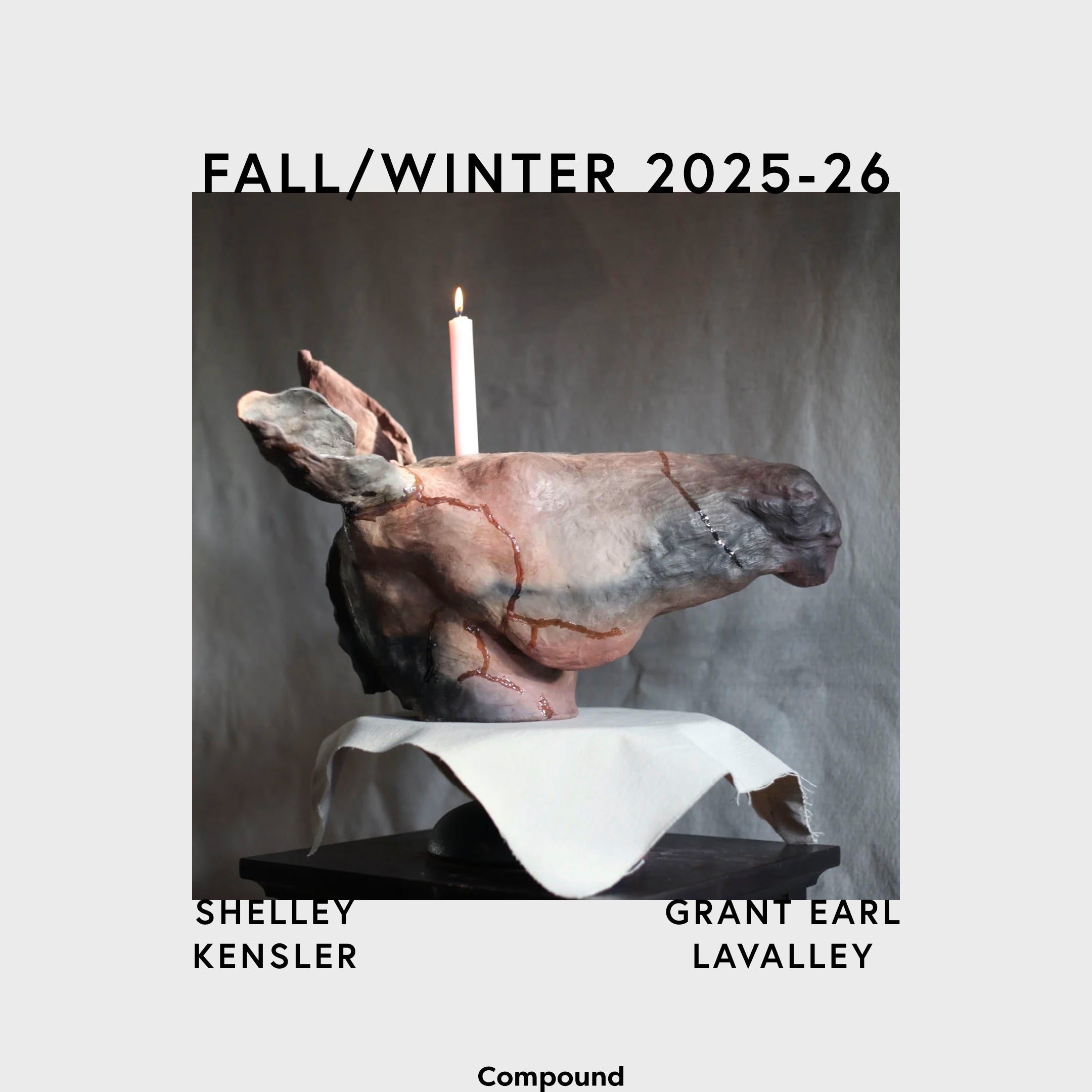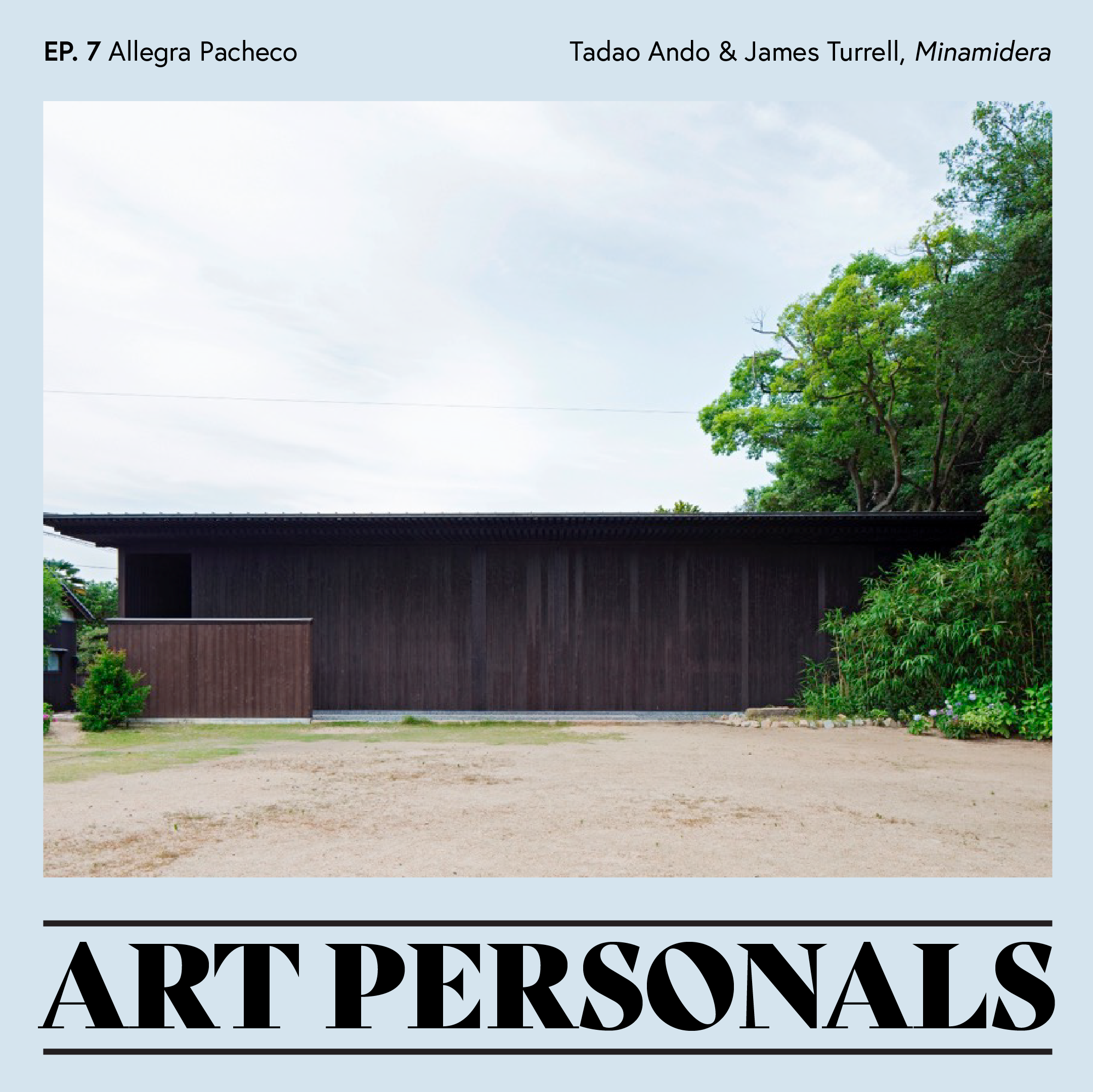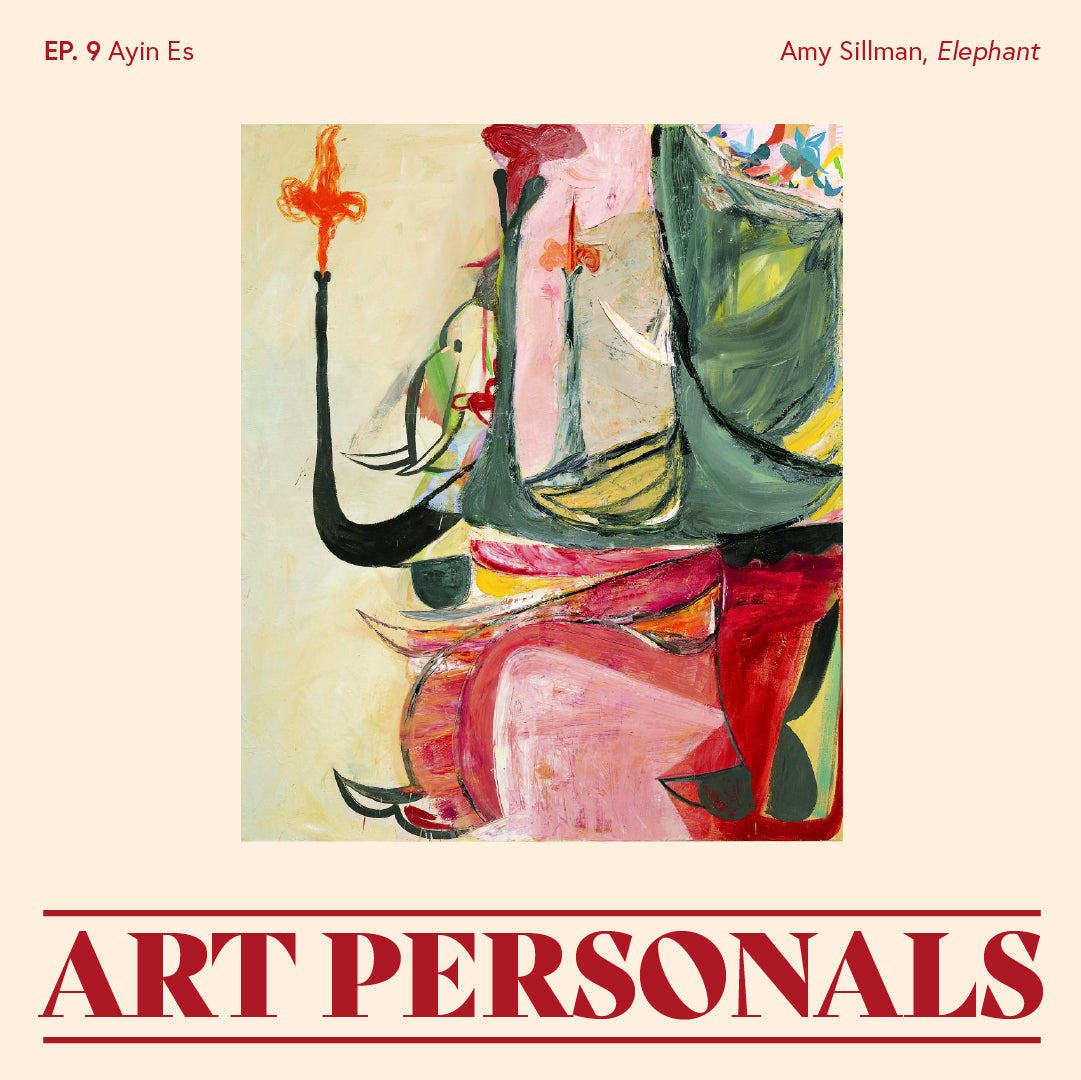
Elena Yu Describes Kenneth Tam
Elena Yu is an interdisciplinary artist from Los Angeles, CA. Elena has worked as an artist and arts organizer in the Morongo Basin since 2016, and recently relocated to Charlottesville, VA where she is an Incubator Artist at McGuffey Art Center. Elena’s work has been supported by grants from Arts Connection, the MRH Fund, the Center for Cultural Innovation, and California Arts Council, and she has attended residencies at Real Time and Space (forthcoming), the Lucas Artist Residency Program, Carrizozo AIR and Haystack Mountain School of Crafts. In 2022, Elena founded two artist-run alternative art spaces in the Joshua Tree area, including The Firehouse and Sun Spot. She has worked as Assistant Director of Programming for High Desert Test Sites (2016-2022) and Program Director for Arts Connection, the Arts Council of San Bernardino County (2022-2023). Elena received a BA in Art from UCLA in 2016.
The work she describes in this episode is:

Kenneth Tam (American, 1982)
Founding of the World
2023
Podcast Transcript:
Lara: Welcome to Art Personals, a podcast made by Compound Yucca Valley, an art and event space in California’s high desert. Here, we ask some of our favorite artists to describe another artist’s work as best they can, with only their words and sounds. The one parameter is that the object they choose must be one they have seen in person at some point in their lives (whether that's an ancient artwork in the Metropolitan Museum of Art or a friend's painting in a garage).
In this episode, we’ve invited Elena Yu to share her experience with Kenneth Tam’s The Founding of the World, which she experienced in the late summer of 2023 at the Berkeley Art Museum and Pacific Film Archive. Elena is an interdisciplinary artist and community organizer from Los Angeles, where she received her BA in Art from UCLA. She moved to the Morongo Basin in 2016, where she founded two artist-run alternative art spaces, The Firehouse and Sun Spot. She also worked as Assistant Director of Programming for High Desert Test Sites and as Program Director for Arts Connection, the Arts Council of San Bernardino County. She recently relocated to Charlottesville, VA where she is an Incubator Artist at McGuffey Art Center. Elena co-curated our exhibition ‘Emergence,’ featuring the Mojave Artists of Color Collective, with support from the California Arts Council. On view at Compound YV from September 9 through November 5, 2023, It was the first-ever public exhibition of works by MACC artists as a collective, aiming both to stabilize and uplift the group.
***
Elena: The first time I saw Kenneth Tam's work was in 2016 at the Hammer Museum. He was part of the Made in LA Biennial. This video that I saw of his was called Breakfast in Bed and involves an artificially lit room with men that were found on Craigslist doing all sorts of intimate, funny, banal kind of bonding exercises and movements with each other.
Whenever I see Tam's work, it's the kind of work that makes me excited to be an artist. And it always gives me a lot of ideas and inspiration for my own work. Not only because of the themes that he is working with, which include exploring ideas of masculinity, what it means to be a man, what intimacy means between bodies, and especially between male bodies. But also, uh, the ideas of racial identity, being Asian, Asian American.
The Founding of the World from 2023, it's a single channel video.
I think that Tam, in this work and many of his work, is showing us how marginalized people often try to find each other. And sometimes like flatten the differences between us in order to just find community and find people who are like us and share our experiences in some way even though there might be cultural differences between us. But those cultural differences aren't the difference between white culture and Asian or Asian American culture. They're the differences between Asian culture and other Asian cultures.
And it does feel like there's some sort of like ingenuine connection, or the word that is used by the curator at Berkeley Art Museum and Pacific Film Archive about this film is "manufactured connection." That's why I chose to talk about this piece, because I think that some of the same efforts and themes are explored in the work that I have in the MACC/Compound exhibition, Emergence. My piece Asian American Businesses of the Morongo Basin was my effort to sort of overlay myself on a stereotypical identity of Asian Americans pictured in massage parlor businesses because the Asians associated with the Asian-owned businesses in the region were where I mainly saw myself.

Elena Yu
Asian Businesses of the Morongo Basin
2022
So there's a projection in Tam's work and in mine of oneself onto the closest thing you can see to a mass Asian identity as an effort towards finding belonging and trying to understand how one fits within this broad coalition of Asian Americans.
So I entered a dark room and the video is playing and surrounding the video are these metal poles suspended from the ceiling, and at the end of each pole is either an empty alcohol bottle, or empty cologne.
And the brands are basic cheap brands of alcohol, like Smirnoff Vodka, and Bacardi, Jack Daniels. Polo blue cologne, and inside the bottles they're illuminated with colored lights. I remember blue light especially, but I think there were a few different colors. And the way that they're installed, they're reflecting light, halos of light, back up onto the ceiling of the dark room, but not reflecting light down onto the ground. And these illuminated bottles made me think about college for sure. I hadn't drank that type of alcohol since college when we mostly drank vodka at parties.
Then I walked up to the screen because there was something interrupting the projection. And that was a knife that looked like someone had stabbed violently into the screen, or the wall that the video was projected on. And the bodies in the video were male bodies. So for me as a Asian American woman, person who has always been a bit, on the fringes of mainstream culture and drinking culture, but has been around that, having gone to UCLA, and lived on the street where the fraternities were where there were parties. I've always felt a sense of fear, and violence, and darkness around that type of culture, and alcohol, and knives, and young male bodies, kind of connote that, like, dread and fear for me.
The video has, I think, four different sorts of scenes, and the editing cuts back and forth between those four elements, not in a systematic way. They'll just be like short clips, they're not the same length. But it's moving back and forth between these four different elements pretty consistently until the end. And it has an even sort of feeling of foreboding.
It maybe escalated a little bit towards the end with quicker cuts, but, okay, so the way that I'll describe it is sort of reflective of the editing, which feels like these hazy, dream-like memories and moments that are kind of out of context, which is something that I have always enjoyed about Kenneth Tam's work, is that he drops you into intimate interactions between people without providing you the context of how you got to that sort of level of intimacy.
The video opens with about eight college-aged boys who are all Asian, mostly East Asian, but one person who looks South Asian. And they are probably all about eighteen to twenty one years old. They're standing in a line and the camera cuts tightly around their bodies. You can see their whole body and they're all standing next to each other, shoulder to shoulder. They're projected in the room larger than life size but not a whole lot larger. Which accentuated that intimidating kind of feeling and the boys are looking you as if you were straight in the eye and this first shot is pretty long, maybe a minute or so.
They have their arms crossed, some of them are cracking their knuckles, clenching their fists. They're moving subtly doing these gestures that connote waiting, like something is about to happen. But because they're young, there's also this feeling that they are not as tough as they're trying to be, they're weak, and going into the viewing experience knowing that the video is responding to the death of a college student who was undergoing hazing rituals for an Asian American fraternity, I had a sense of, like, worry for these boys as I see them staring at me. All of the boys are wearing matching red t-shirts, and either jeans or black pants. All exactly the same, all new looking clothing.
Knowing Kenneth Tam's work, I know that there's a presence of the artist or a being who gave directions to the bodies in the video. There's a feeling that they're not self initiated. In this situation, it's like they're doing movements that feel like part of a hazing ritual. So there's one where pairs of the men are hugging each other, but they're doing it quite violently. And it's not like the sort of male hug where you like shake hands and then pat each other's back. It's a full like open-chested, two-armed hug, but they're sort of throwing themselves at each other in a hug, so that represents like a violent intimacy.
There's a great shot of three of the college boys spooning each other. They're lying on something, a platform that's not quite a mattress and they're spotlit with darkness around them and they're spooning but not really comfortably and closely to each other. The floor around the platform is like this ugly, cold-looking tile floor. And you don't really see their faces, and they slightly move, as if they're sleeping. I think one of them might have his hand on the other's leg or hip. I've always felt like there definitely is like a underlying sense of, like, eroticism in Kenneth Tam's work, including this work. Maybe that's just because I'm not used to seeing cisgendered, straight men touch each other so much, or be so physically close to each other. And he, Tam, puts his subjects in a position where there's no buildup to the physical intimacy, they're just in it. And that gives you a sense that you're like, jumping into something that's more, um, erotic than we're used to seeing in representations of men, especially Asian men, who are often desexualized.
There are shots that are very close up of the college boys. There's two of them, and they're pushing the tops of their heads hard against each other. Pushing, pushing, like they're wrestling, but without their arms. They're just pushing their heads for a few seconds, maybe 10, 15 seconds. And then one of them starts to use his arms, and the other one does too, and they start to wrestle. In a more traditional way.
There's this shot where the college age boys are, I think it's in slow motion, and they're dancing. And it's sort of like a social college dancing. There's something sweet about that scene. But also awkward because when you're at, when you're that age, and any age really, it's... It's like very much a self conscious and awkward act to dance at a party. Until you really get into it and forget your self consciousness.
The second type of shot in the video is of a adult male dancer. A single person in the shot. And he is sometimes unmasked and sometimes has a face covering of a couple sorts. One being this Japanese Oni mask which is like a demon face. And I think that represented like a stereotype of Asian male, like, strength and the archetype of a sort of scary spirit that a male can be. And the other mask was like a white, and this mask also turned up in the fraternity boy scenes. It was like a white cotton jersey hood mask that had like Rorschach test ink splotches on the front, and somehow the ink splotches changed as the person wearing the mask breathed, so that was really creepy.
The setting is this almost like infinity space with curved walls, and blue aura, and red light or green light. And he's wearing an all black outfit, a loose black outfit. The setting that the young college boys are in is an artificially lit indoor space and sometimes there's more dramatic lighting, like spotlights on them with darkness around them.
There's a scene where the college boys are in a line and they're all wearing these creepy Rorschach masks. There's one boy facing the line of men and has a plastic water bottle and the man at that's closest to the camera has his mask off. Or actually it's lifted up just above his mouth. All of the boys actually have their masks lifted up above their mouth and they're being fed clear liquid out of the bottle. I'm not sure if it's water or alcohol. My first thought was that it was alcohol, and then like, remembering that as a underage person who's not supposed to drink, one often puts clear alcohol into a water bottle to hide the fact that you're drinking illegally. Or maybe it's water, and they're being nourished because they're being put through all these physical tests, and that is an act of care in some way. By the Man who is hazing the pledges, feeding them water.
And it's something I remember from some of Kenneth Tam's other videos, that sometimes the men whose differences and subjectivities are apparent when their faces are visible. He flattens them into like, one type of just stereotypical man, or Asian man, by putting masks on them. In one of his other videos, the Breakfast in Bed, there are shots where the men have panda masks on.
So in this one, he sometimes masks all of the men in these creepy Rorschach masks. So the, the adult male dancer is doing movements that feel like, they're drawing both from martial arts and also more contemporary and modern forms of dance, improvisational dance. There's an elegance, and a confidence, and a strength, and beauty to this dancer's movements that feels different than the type of movements that the young men are doing, which are more awkward and self conscious.
The third type of shot in the video also has dancers, three Asian bodies, and they are doing these kind of synchronized choreographed movements that feel much more choreographed than the single dancers movements, and they're often making direct eye contact at the camera, at the viewer.
I remember noticing in the scenes with the three dancers, they have these hoods on them. That are black, cover their head and their shoulders, sort of like a nun habit, but more synthetic looking. You can see their whole faces, but the hood wraps around their shoulders as well. And I remember noticing the tattoos of two of the dancers, and I could briefly see that one of them said home on the arm, or maybe it was family, I think it was family.
A lot of them feel more like creature like, crawling on the ground, and they're in, it feels like, an empty warehouse or empty barn type of space where you can see like paint peeling on the wall behind them. Like that kind of beautiful peeling paint that's layers of time and layers of wall paint peeling to reveal the past and I believe wooden floors. But mostly for all of these shots, they're like close up shots so you don't get a lot of context of the wider space that they're in. It's more like textures and colors behind them.
And the fourth type of shot, which is the more mysterious kind of curveball, is these 3D computer generated renderings of, I believe it's the Washington Square Park Arch, and it's evening time, and you're a bird's eye, kind of sweeping view, not quite a drone, not quite a bird, because it's more fluid and like the viewpoint goes from looking down to looking up, depending on, maybe it's more like a bug or something, going under the arch, and every subsequent time that the arch is pictured, it's become more and more distorted in some way.
As if it's been, like, cut up and collaged, until it becomes, like, completely disoriented and, like, totally cut up into tiny little bits that are rearranged. I'm not sure how that part of the video really fit in for me. I'll have to think about that some more.
The sound of the video, of course informs the, the vibe and the feeling of creepiness. I took an audio recording while I was sitting to watch the video so that I could listen to it later and remember. There's kind of a low drone, and then there are vocal moments.
Mm hmm hmm.
There's a sort of throat singing groan. There's moments of silence and of deep chanting.
The way the video ends is the line of college boys, but this time they have these, like, orthodontia pieces in their mouths that hold their mouths open, pull their lips back so you can see their teeth and gums and it makes their faces look like the demon mask. But it looks so unnatural on real humans, so you have the sense of, like, how fake the demon mask is and the fact that it's a caricature.
And I thought that was really interesting because so much of this video to me is speaking to the image of a real Asian man versus the kind of caricature or cartoon or idea or stereotype of what it means to be an Asian man. And Tam is putting these masks, and clothing and rituals on the men to make them kind of forge a collective identity, in order to find affinity between each other and belonging.
***
Lara: Thanks for listening to Art Personals, a podcast produced by Compound Yucca Valley. You have been listening to Elena Yu discuss her encounter with Kenneth Tam’s The Founding of the World.
Before we wrap up, we wanted to include one final disclaimer of sorts. Two of us here at Compound come from contemporary dance backgrounds, and we were made aware from within our community since producing this episode that Tam has worked with movement experts — our friends — behind the scenes who’ve gone uncredited. We could make an entire podcast about Choreography being appropriated across more heavily capitalized media throughout history, but for now we simply felt it important to share this knowledge.
If you enjoyed today’s episode, please consider supporting Elena and all the artists in the Mojave Artists of Color Collective. You can learn more about Compound YV and stay tuned for future episodes over at our website and our instagram @compoundyv. You can learn more about the Mojave Artists of Color Collective at biggmacc.org (b i g g m a c c dot o r g). That’s bigg macc with two g’s and two c’s.
Art Personals is produced by Caroline Partamian, Michael Townsend, and me, Lara Wilson, in collaboration with our artists.
Emiliano Vazquez mixed this episode.
Original music by Ethan Primason.
We curate shows for our virtual and physical spaces. If you are an artist interested in working with us, please send an email to hello@compoundyv.com.



